
Bartholomäus Spranger (1546–1611) was a Flemish artist and engraver who worked in the Mannerist style. His paintings were quite provocative even by modern standards – complex compositions with nude figures in the most exquisite poses, with a large number of all sorts of details, often seeming completely excessive. But all these are the hallmarks of Mannerism, when the more exquisite and complex – the better.
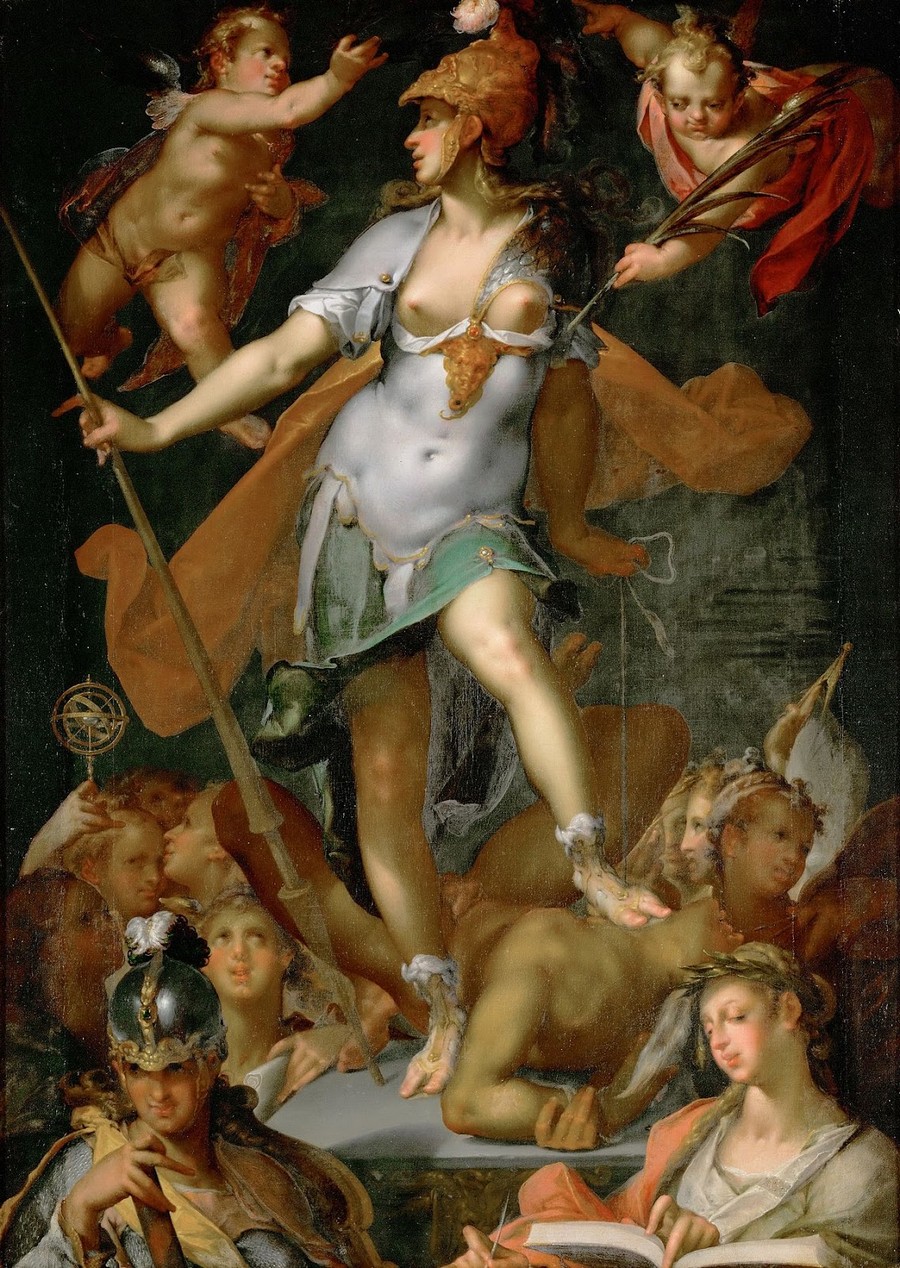
Minerva protects the sciences and arts, defeating ignorance
Spranger was born in Antwerp, his father was a merchant and he travelled a lot on business, even to Rome. But Spranger himself was not much interested in commerce, he preferred to draw and became a student of the artist Jan Maiden. But Maiden died after a year and a half, and Spranger mourned the necessary time and continued his studies with the landscape painter Cornelis van Dalem.

Hercules and Omphale.
But Spranger found it boring to specialize in landscapes like his teachers, and they paid him less for them. So he copied Parmigianino's engravings, and then, after a short stay in Paris and Lyon, he moved to Italy, where he worked as an apprentice and student of the artist Bernardino Gatti. In fact, his schooling was quite good, which, combined with his undoubted talent, later allowed him to become famous as an outstanding painter.
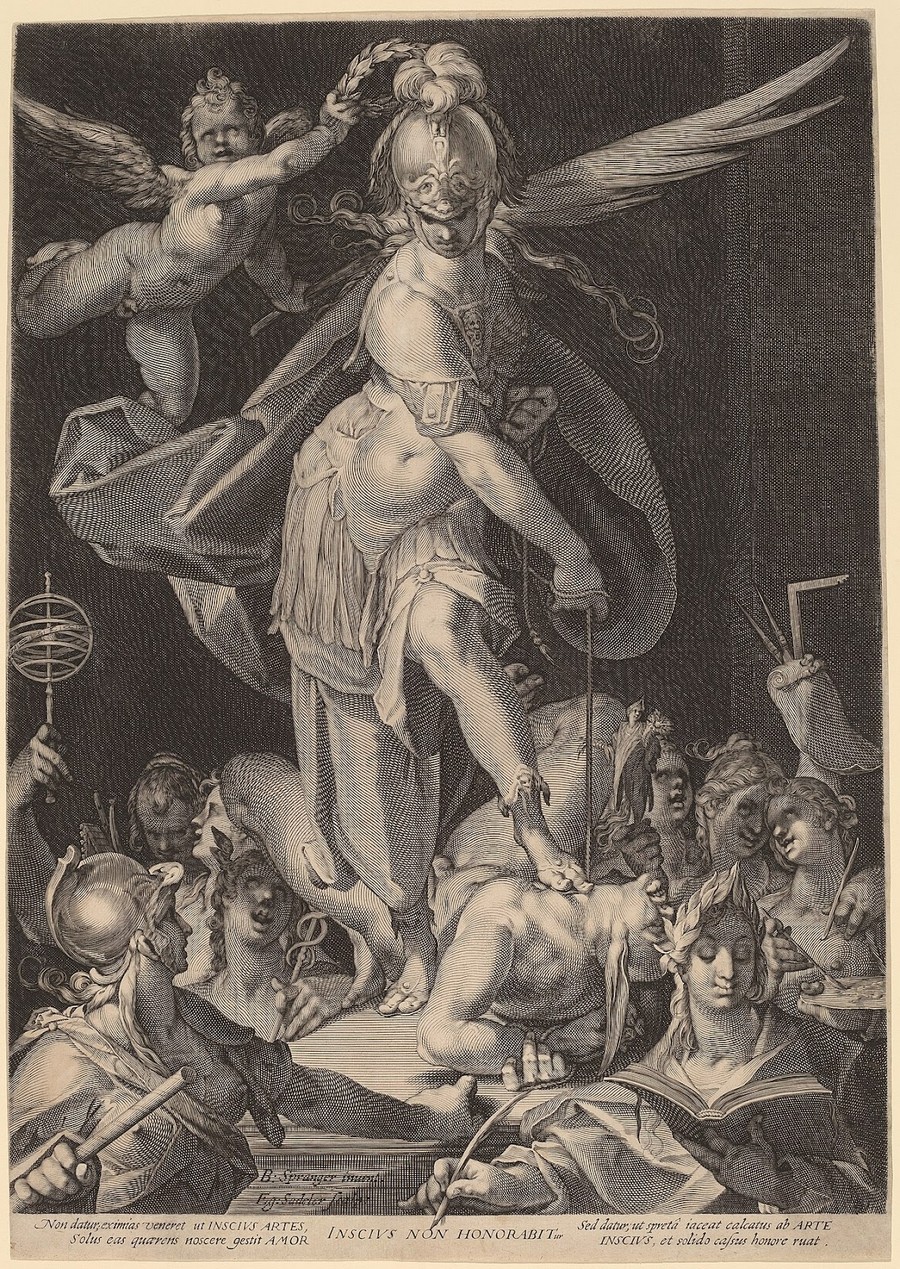
The victory of wisdom over ignorance.
Pope Pius V himself noticed him and offered him the position of court artist, which was practically the pinnacle of his career. Spranger gladly accepted and painted a whole cycle of paintings dedicated to the Passion of Christ. But in 1572, Pius V died and Spranger was once again left without work.
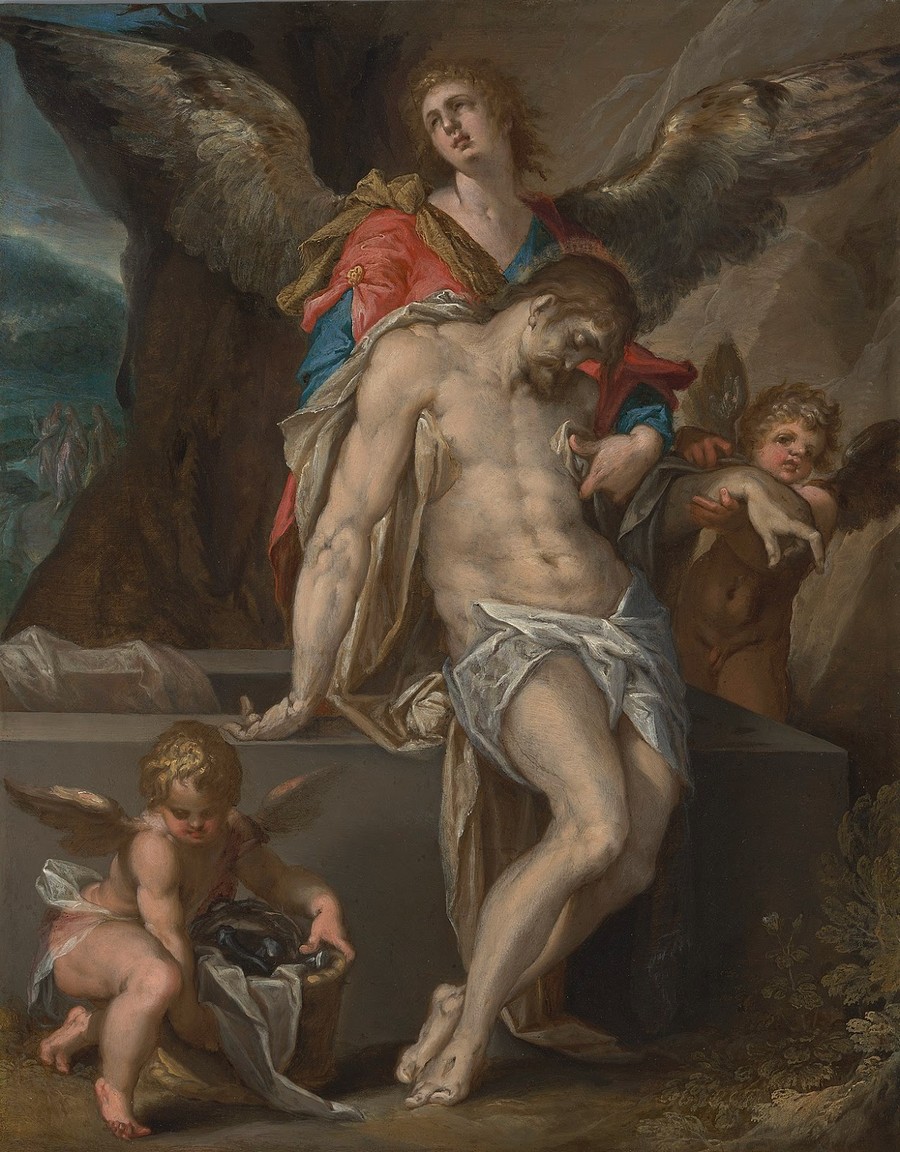
The body of Christ supported by an angel.
However, he did not remain without work and commissions for long - the status of a former court artist was the best recommendation. Soon Spranger was painting for the Holy Roman Emperor Maximilian II, and when he died three years later, he became court artist to his son Rudolf II, who had ascended the throne. The new king was young and favored Spranger, although he was shy and tried to stay away from politics and government. But he was a patron of painting and the arts, so Spranger lived quite quietly under him, receiving lucrative commissions with enviable regularity.

Hermaphrodite and the nymph Salmacis
But the artist's private life did not work out. He married the young daughter of a wealthy jeweler at the age of 38, but she died six years later - she could not survive the death of her children. Spranger never married again and devoted himself entirely to creativity, where he found an outlet for all of life's worries.
The patron of the artist, Rudolf II the Second, was an extraordinary and expressive person, a lover of everything original, attracted to mysticism, occultism and alchemy, even considered himself possessed by the devil, so Spranger developed a special style for him, called Northern Mannerism, where he elevated expressiveness and pretentiousness to the absolute.
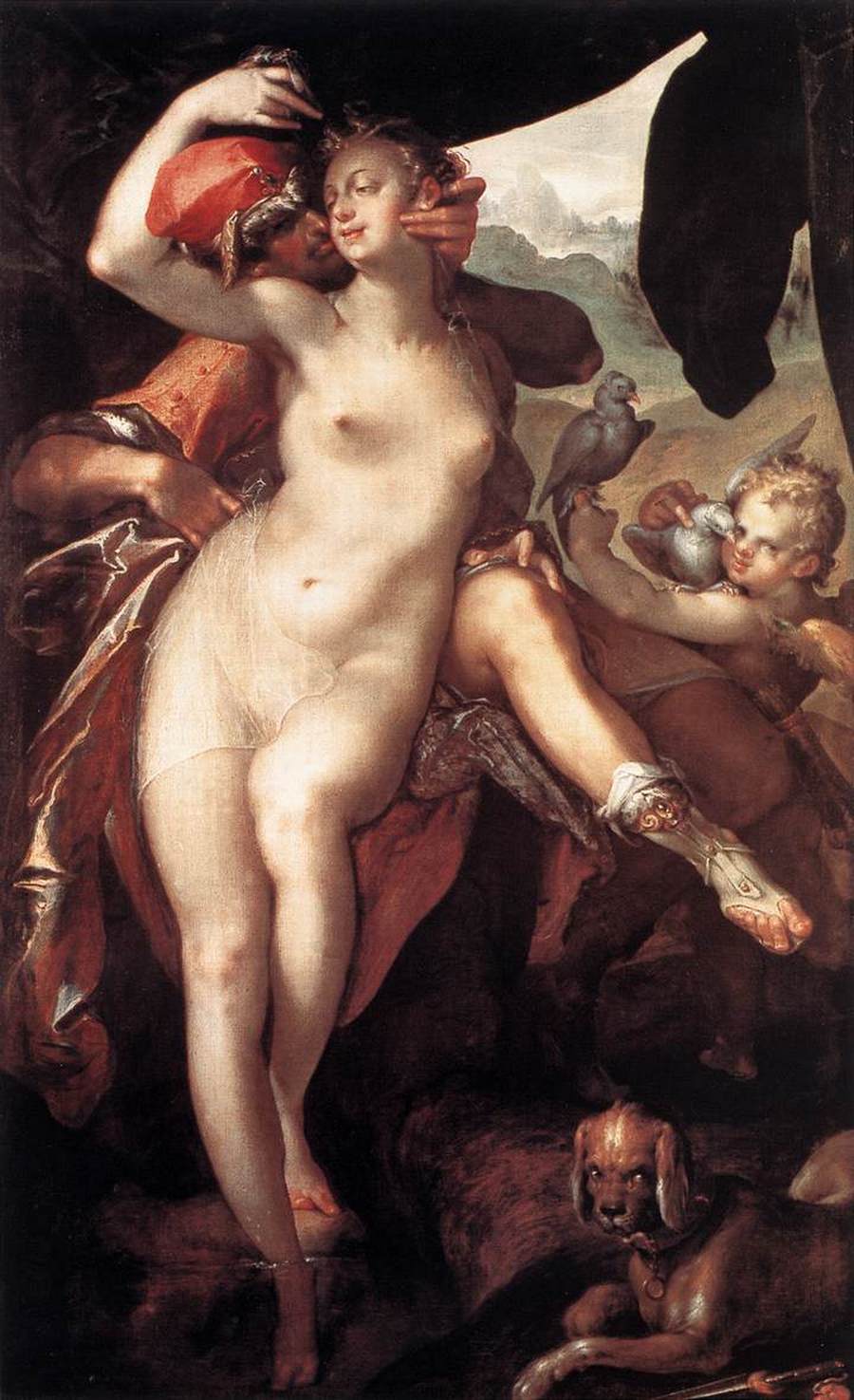
Venus and Adonis
Themes from classical Greek and Roman myths and legends were the basis, but often they were merely a backdrop for the depiction of intricately intertwined nude figures. His paintings were a peculiar mixture of eroticism, allegory, and pretentious praise of Rudolf II, but such work was in great demand by the emperor, and Spranger simply followed his taste.
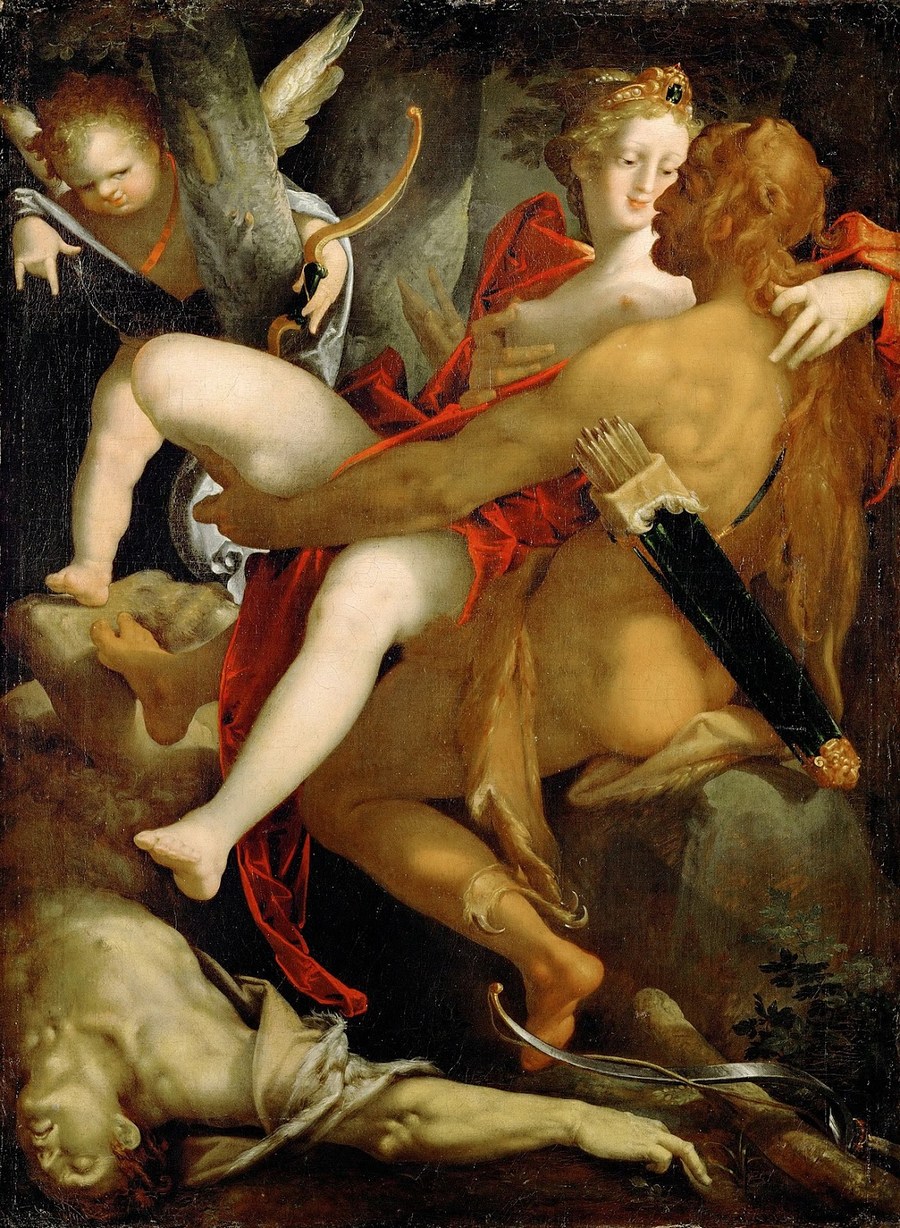
Hercules, Dejanira and the Centaur Nessus
However, he left his mark on art, and not every artist can boast of developing an entire movement - in this case, Northern Mannerism - as Bartholomeus Spranger did.Buy handmade goods or modern art you can on artAlebrio - is an international marketplace for people who want to create, sell, buy and collect unique items and art - buy the best with us artAlebrio.com.
By confirming your order you unconditionally accept these General Conditions of Sale